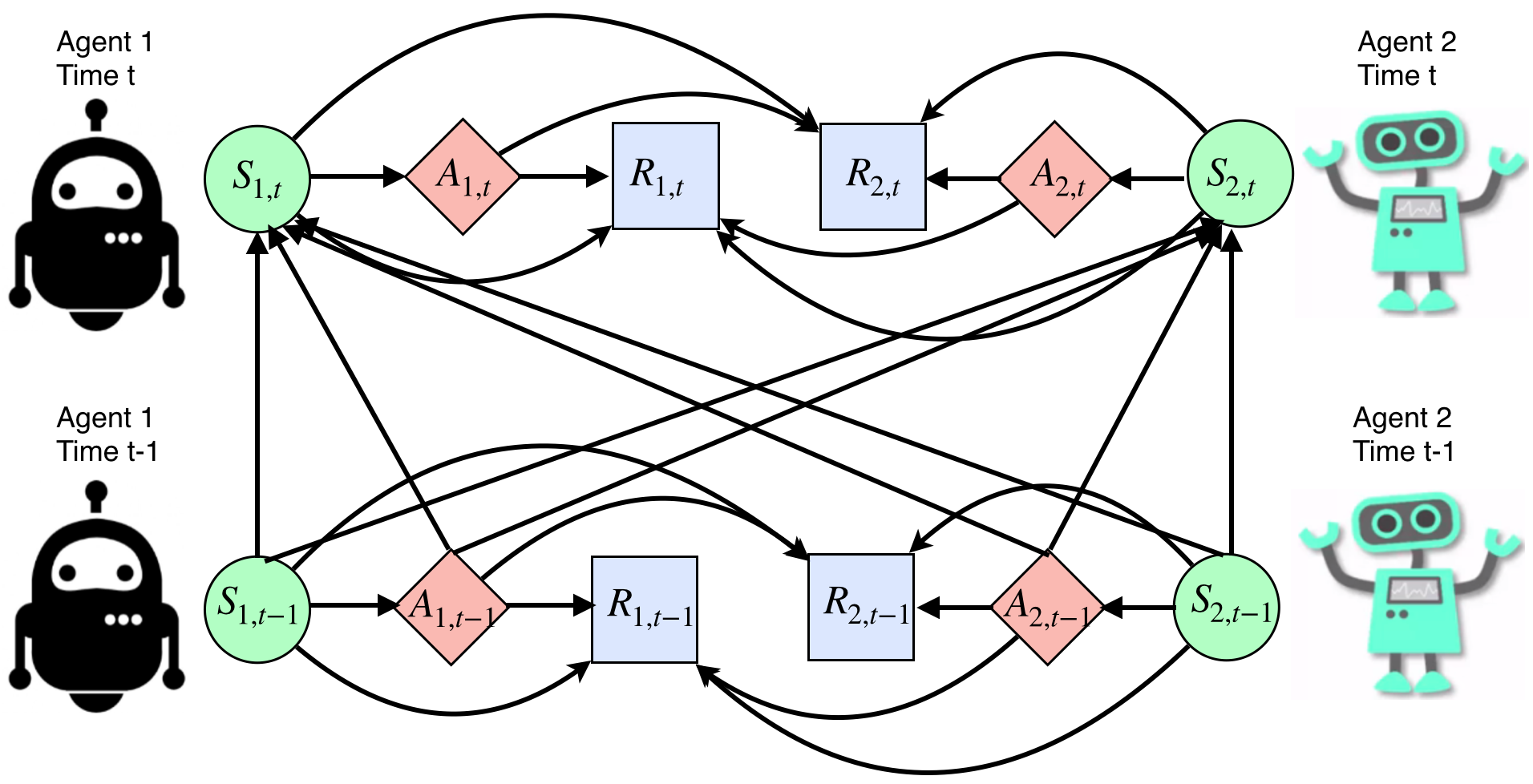This repository contains the implementation for the paper "A MULTI-AGENT REINFORCEMENT LEARNING FRAMEWORK FOR OFF-POLICY EVALUATION IN TWO-SIDED MARKETS" (AOAS, 2022+) in Python.
The two-sided markets such as ride-sharing companies often involve a group of subjects who are making sequential decisions across time and/or location. With the rapid development of smart phones and internet of things, they have substantially transformed the transportation landscape of human beings. In this paper we consider large-scale fleet management in ride-sharing companies that involve multiple units in different areas receiving sequences of products (or treatments) over time. Major technical challenges, such as policy evaluation, arise in those studies because (i) spatial and temporal proximities induce interference between locations and times; and (ii) the large number of locations results in the curse of dimensionality. To address both challenges simultaneously, we introduce a multi-agent reinforcement learning (MARL) framework for carrying policy evaluation in these studies. We propose novel estimators for mean outcomes under different products that are consistent despite the high-dimensionality of state-action space. The proposed estimator works favorably in simulation experiments. We further illustrate our method using a real dataset obtained from a two-sided marketplace company to evaluate the effects of applying different subsidizing policies.
Figure: Causal diagram for a multi-agent system with two agents.
- Python version: Python 3.6.8 :: Anaconda custom (64-bit)
- Main packages for the proposed estimator
- numpy
- scipy
- sklearn
- tensorflow == 1.13.2
- itertools
- Additional packages for experiments
- pickle
- multiprocessing
- os
- time
- sys
- logging
- warnings
main.py: main function for the proposed estimator and its componentsweight.py: neural network for the weight estimation partutils.py: helper functions formain.pyand simulation parts
simu.py: experiment script for reproducing the results in the papersimu_funs.py: main functions for the simulation experimentsimu_DGP.py: data generating functions for the simulation experiment
Real_Simu/policy_defination.py: definitions of target policiesReal_Simu/est_with_pseudo_data.ipynb: notebook to obtain estimated policy value with the pseudo-dataset.Real_Simu/real_data_input.py: functions for preparing input dataReal_Simu/pseudo_data: a pickle file. One simulated dataset.
Files _core_test_fun.py, _QRF.py, and _uti_basic.py are all from the package TestMDP.
To reproduce the results presented in the Simulaiton section:
- Change the working directory to the main folder
- Run
python simu.py, which generates two filesfinal_sd.txtandfinal_T.txt - Load them with
pickle.loadand then we can get the results that Figure 4 is based on.
We use the testing procedure developed in the package TestMDP.
Essentially, we collect the simulated trajectories, organize them into the expected input formats, and call the test function.
See test.ipynb for details.
The real data used in the paper is from a ride-sharing company. Due to data confidentiality, we are not allowed to release some sensitive data such as the Gross Merchandise Volume and the implemented subsidizing policies. Therefore, results can not be exactly reproduced.
That said, we try our best to provide a similar simulation environment. Specifically, a dataset generated by the simulator is provided and can be used with the estimators. True policy values are also provided. This dataset corresponds to the passenger-side subsidizing policies.
To reproduce the estimation results corresponding to the generated pseudo dataset, run Real_based_Simulation/est_with_pseudo_data.ipynb.
